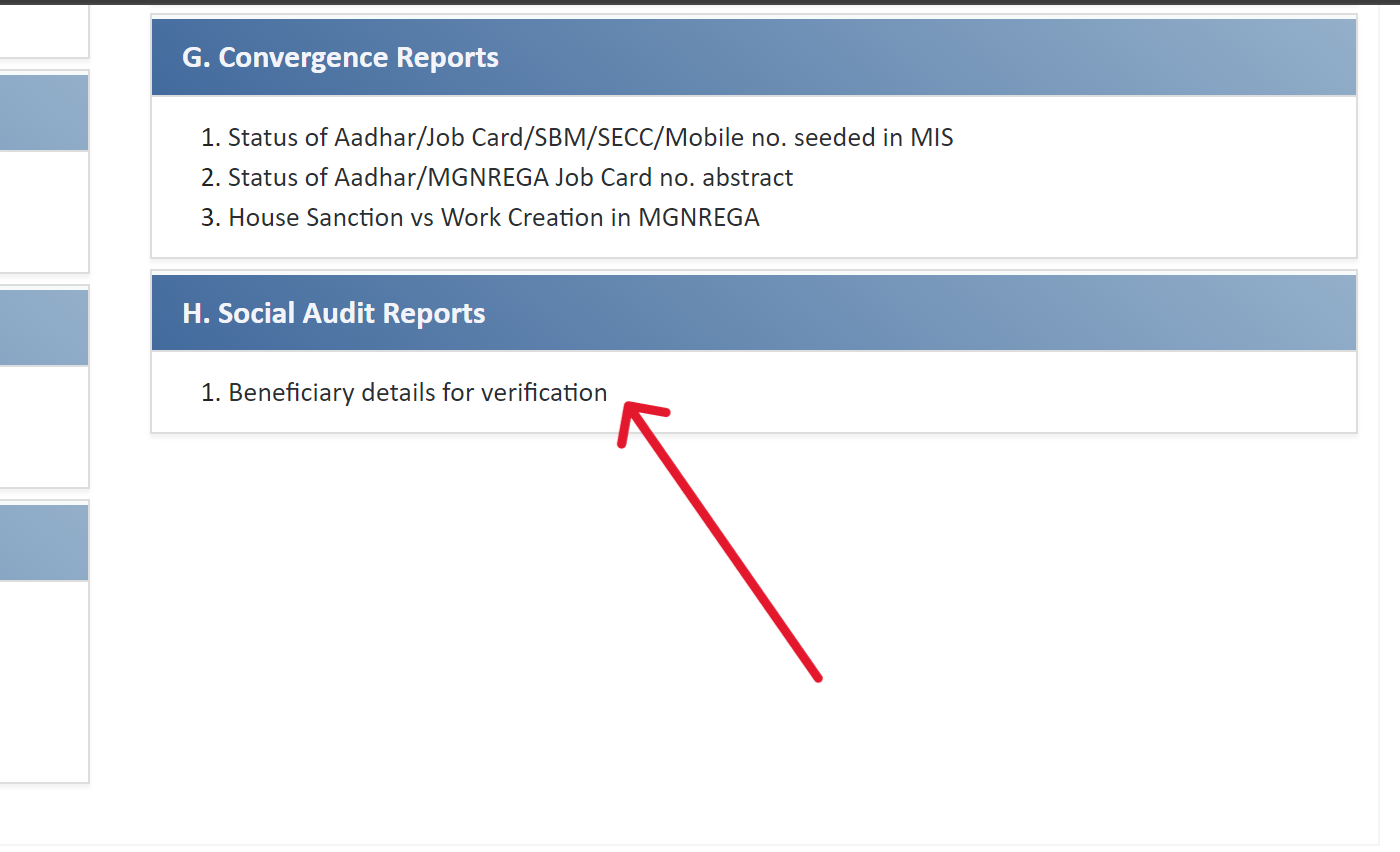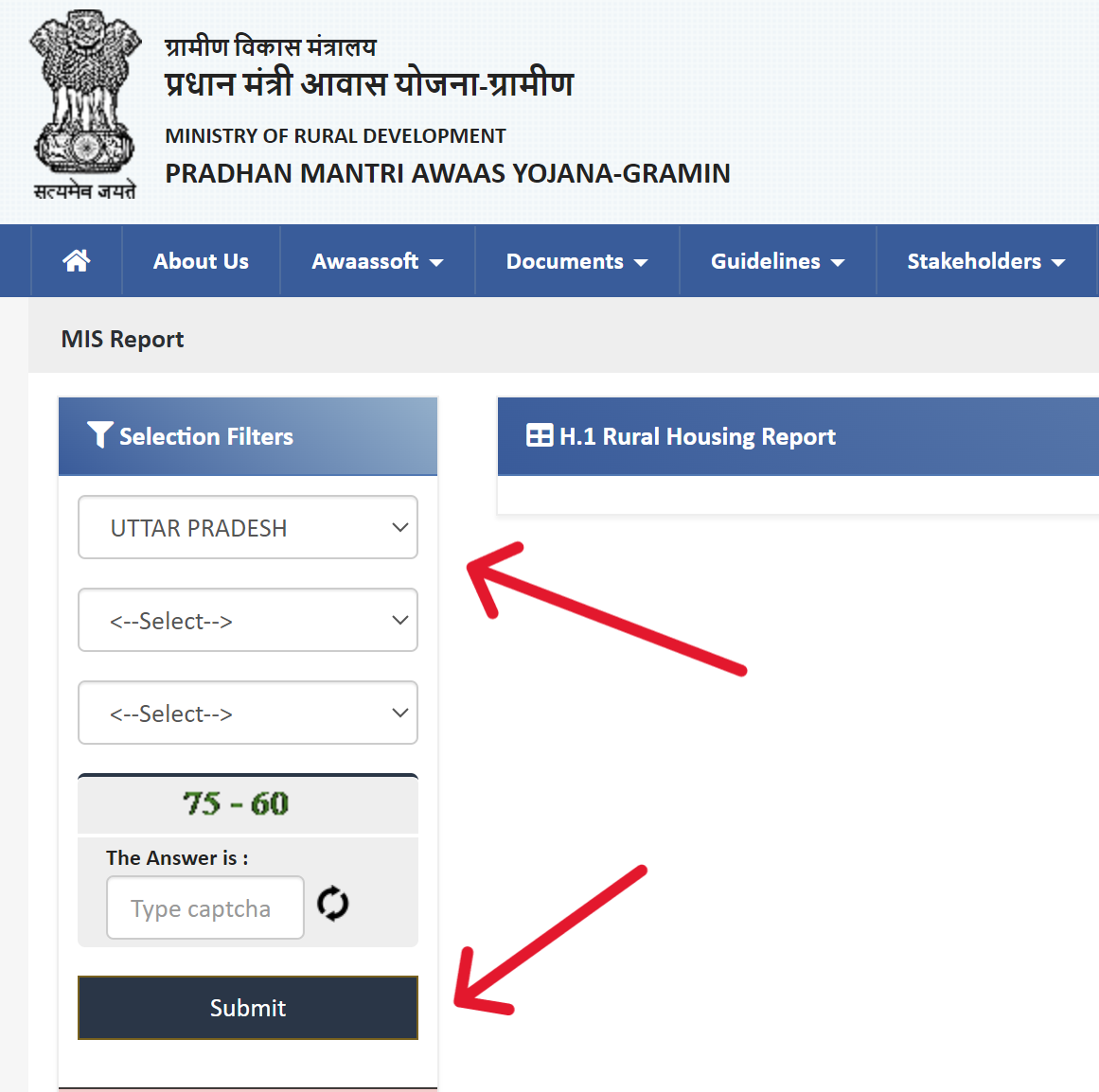PMAY-G Beneficiary List UP
The PM Awas Yojana Gramin (PMAY-G) offers funds to help rural families in Uttar Pradesh build affordable homes, aiming to improve village life and ensure everyone has a safe place to live.
In this article, we have explained how to check the PMAY-G Uttar Pradesh Beneficiary List.
Check PMAY-G Uttar Pradesh Beneficiary List
To view the PM Awas Gramin list, follow these steps:
- Start by visiting the PMAY-G official site. Go to pmayg.nic.in.
- Find 'Awaassoft' on the menu. Click on it.
- See a dropdown? Pick the "Report" option.

- You'll move to a new page. The link is rhreporting.nic.in.
- Look under 'Social Audit Reports'. Click on "Beneficiary details for verification".

- Now, you're on the MIS Report page. Time to fill in some info. Choose UP as your state, then add your district, block, and village.

- All set? Hit the "Submit" button.
- There's your list! Now you can check if you're a beneficiary.
PMAY-G in Uttar Pradesh: Key Facts
PMAY-G in Uttar Pradesh aims to provide pucca houses with basic amenities to rural households by 2024.
The scheme focuses on financial aid, transparent selection, and integration with other government programs to uplift rural communities.
Key Points:
- Objective: PMAY-G in Uttar Pradesh aims to provide pucca houses with basic amenities to houseless households and those living in kutcha or dilapidated houses by 2024. The scheme is part of the national mission for "Housing for All."
- Financial Assistance: Beneficiaries in plain areas receive ₹1.20 lakh per house, while those in hilly and difficult regions receive ₹1.30 lakh.
- An additional ₹12,000 is provided for toilet construction through the Swachh Bharat Mission - Gramin (SBM-G).
- Beneficiaries are entitled to 90–95 days of labor support from the Mahatma Gandhi National Rural Employment Guarantee Scheme (MGNREGS) during house construction.
- Beneficiary Selection: Beneficiaries are selected based on housing deprivation data from the Socio-Economic Caste Census (SECC) 2011. The final list is verified by the Gram Sabhas to ensure accurate targeting of the neediest households.
- Monitoring Tools: The scheme utilizes digital platforms like AwaasSoft for beneficiary management and AwaasApp for real-time tracking of house construction. This ensures transparency in the process, and fund disbursement is done through Direct Benefit Transfers (DBT).
- Convergence with Other Government Programs: PMAY-G integrates with multiple government programs, including the Jal Jeevan Mission for drinking water, Pradhan Mantri Ujjwala Yojana for LPG connections, and rural electrification schemes to provide comprehensive benefits to rural households.
- Special Initiatives:
- A National Technical Support Agency (NTSA) has been set up to provide technical assistance and ensure quality construction using locally available materials and disaster-resistant house designs.
- Rural mason training programs are also in place to improve the quality of construction and build skilled labor in rural areas.
Useful Facts
- Phased Implementation: PMAY-G is being implemented in phases. The first phase saw the construction of 1 crore houses between 2016-17 and 2018-19, with the remaining houses targeted for completion by March 2024.
- Increased House Size: The minimum size of a house under PMAY-G has been increased to 25 square meters, which includes a hygienic cooking space, marking an improvement over earlier programs like the Indira Awaas Yojana (IAY).
- Land Allocation for the Landless: The Uttar Pradesh government ensures that landless beneficiaries are provided with land for building their houses under PMAY-G. Essential infrastructure such as road connectivity, electricity, and water is also prioritized for these households.
These points highlight the key aspects of PMAY-G in Uttar Pradesh, focusing on financial aid, beneficiary selection, digital monitoring, and the integration of various government schemes to improve the quality of rural housing.